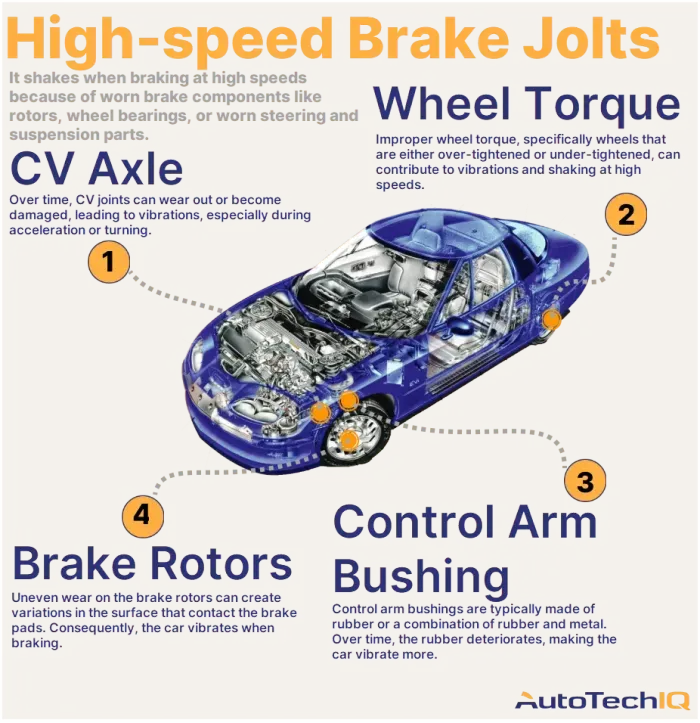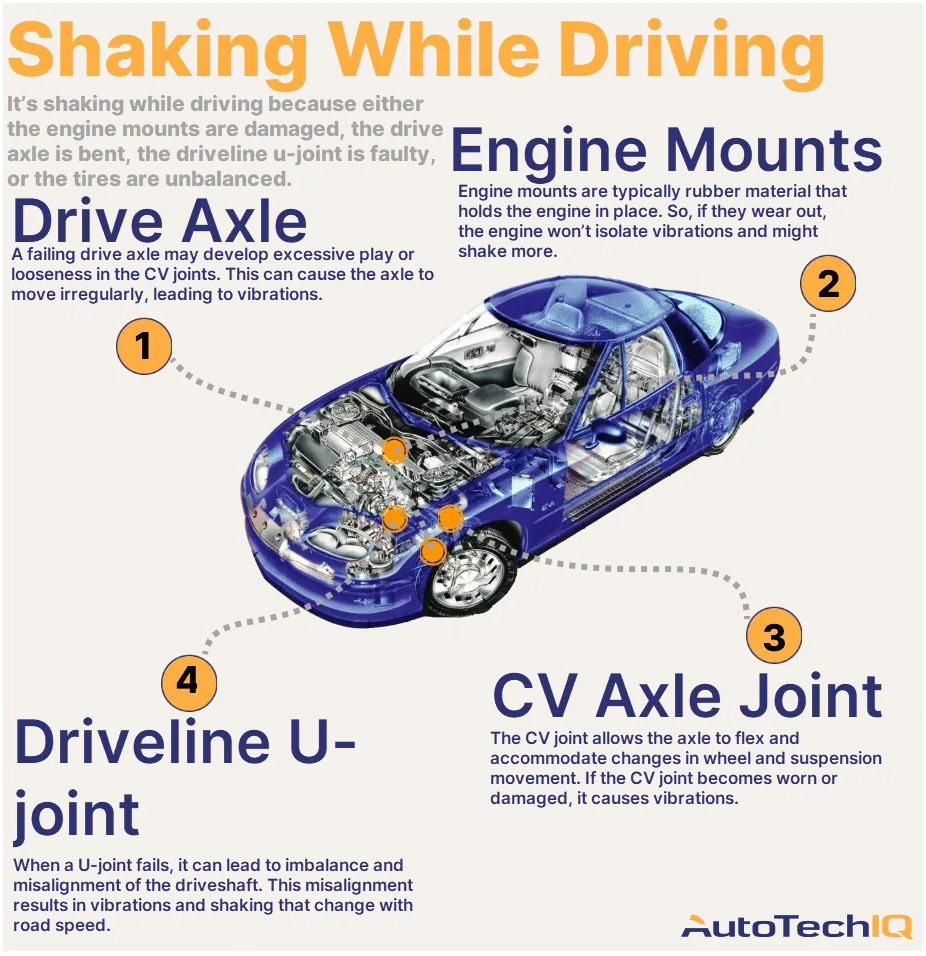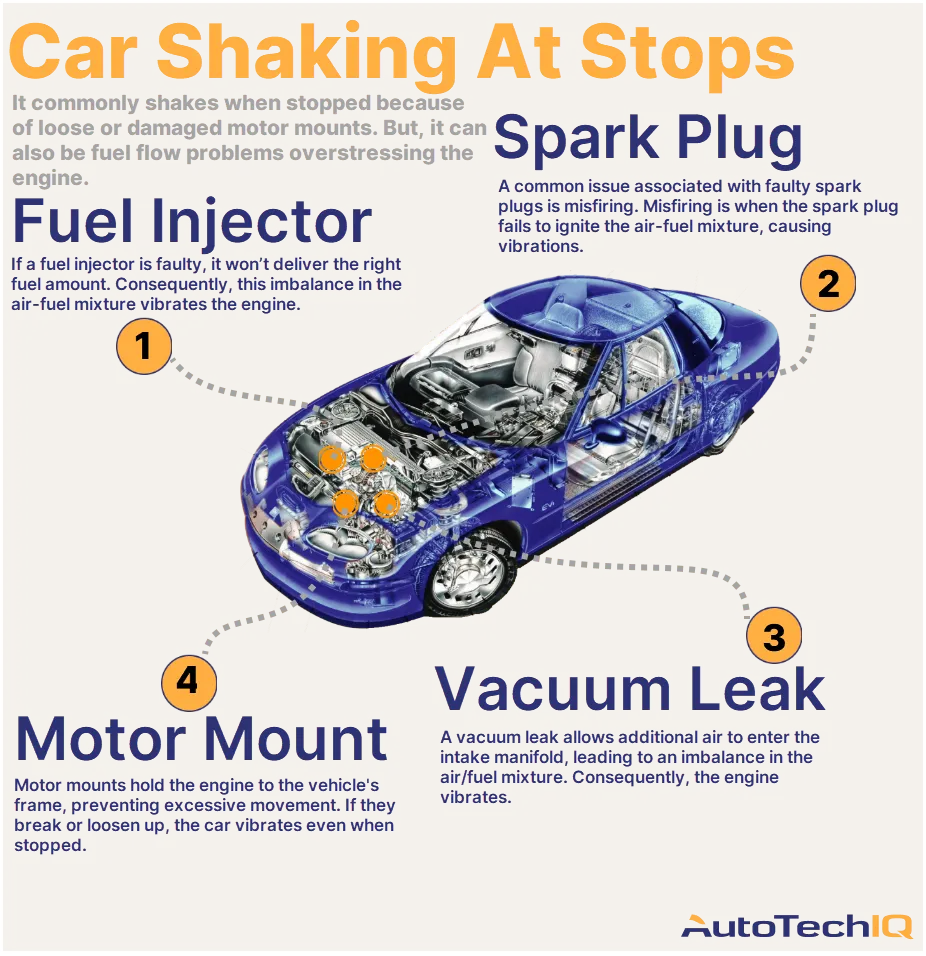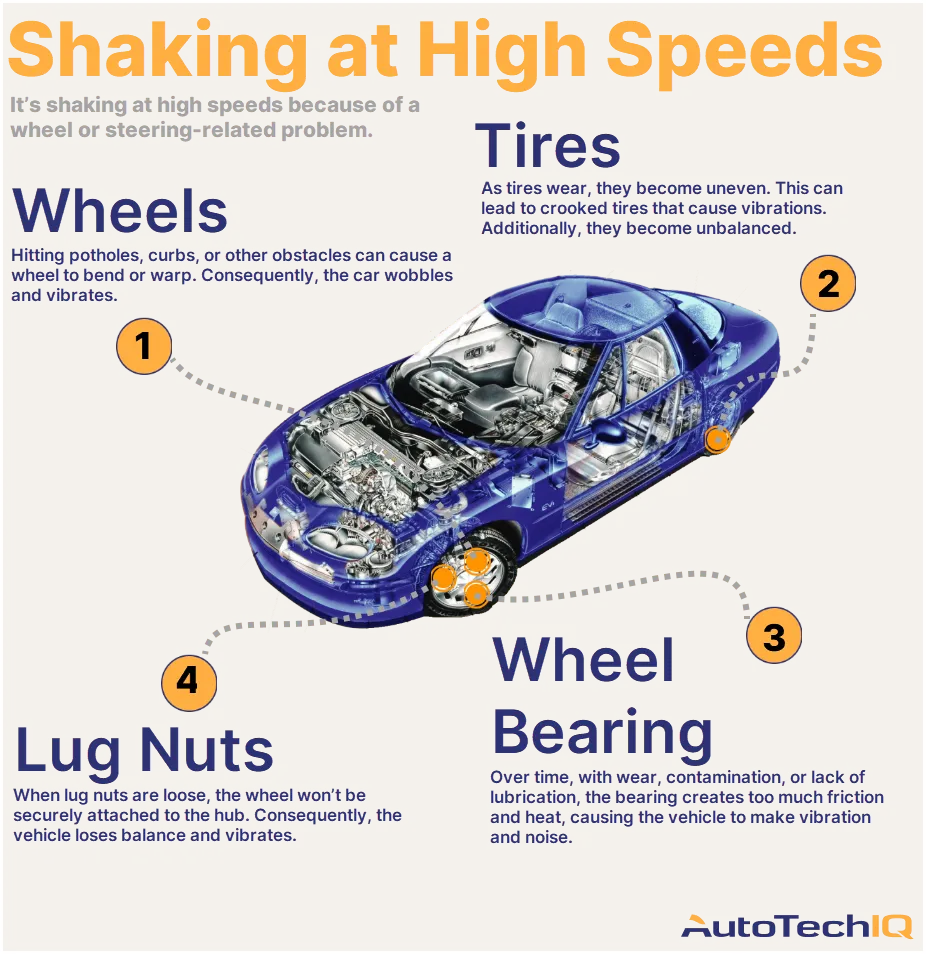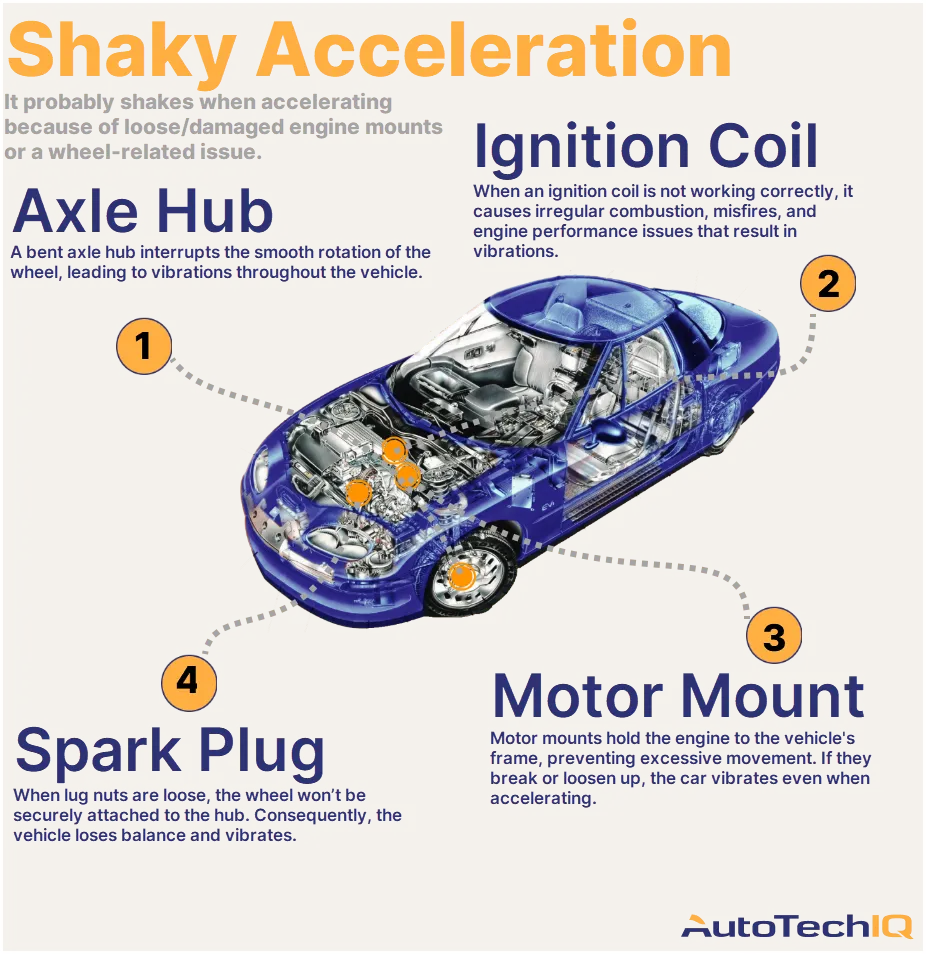Transparency example in a loose motor mount service
A brake, steering, and suspension system inspection is the most transparent process to understand why your vehicle’s brake pads are worn. This is because many components surrounding the tires and wheels can have a say in the issue, indicating the real culprits that caused it all.
Let’s read an example of how this kind of inspection helps to service a worn brake pad.
A customer reported a problem with their vehicle. The car vibrates when braking on the freeway. However, they didn't notice any shaking when driving slowly. When the technician took the car for a test drive, they felt the shaking when braking after a few stops.
The technician found that the front brake pads were tapered during the vehicle health inspection. However, the back brake pads were not tapered and still had 5mm of thickness left.
Tapered brake pads are worn unevenly, and one side of the brake pad is thicker than the other. This uneven wear can cause the vehicle to shake while braking.
To further investigate the issue, the technician used a dial indicator to check the runout of the front rotors. Runout refers to the measurement of the side-to-side movement of the rotor as it spins. The technician found the front rotors had 0.030 to 0.025 inches of runout, just below the minimum specifications. This runout can cause the vehicle to shake while braking at high speeds.
The technician determined that both the front brake pads and rotors needed to be replaced to fix the problem. This is because the uneven wear on the brake pads had caused excessive heat and wear on the rotors, which in turn caused the runout.

In this case, the mechanic put the “Immediate Action” tag on the brake pads.
